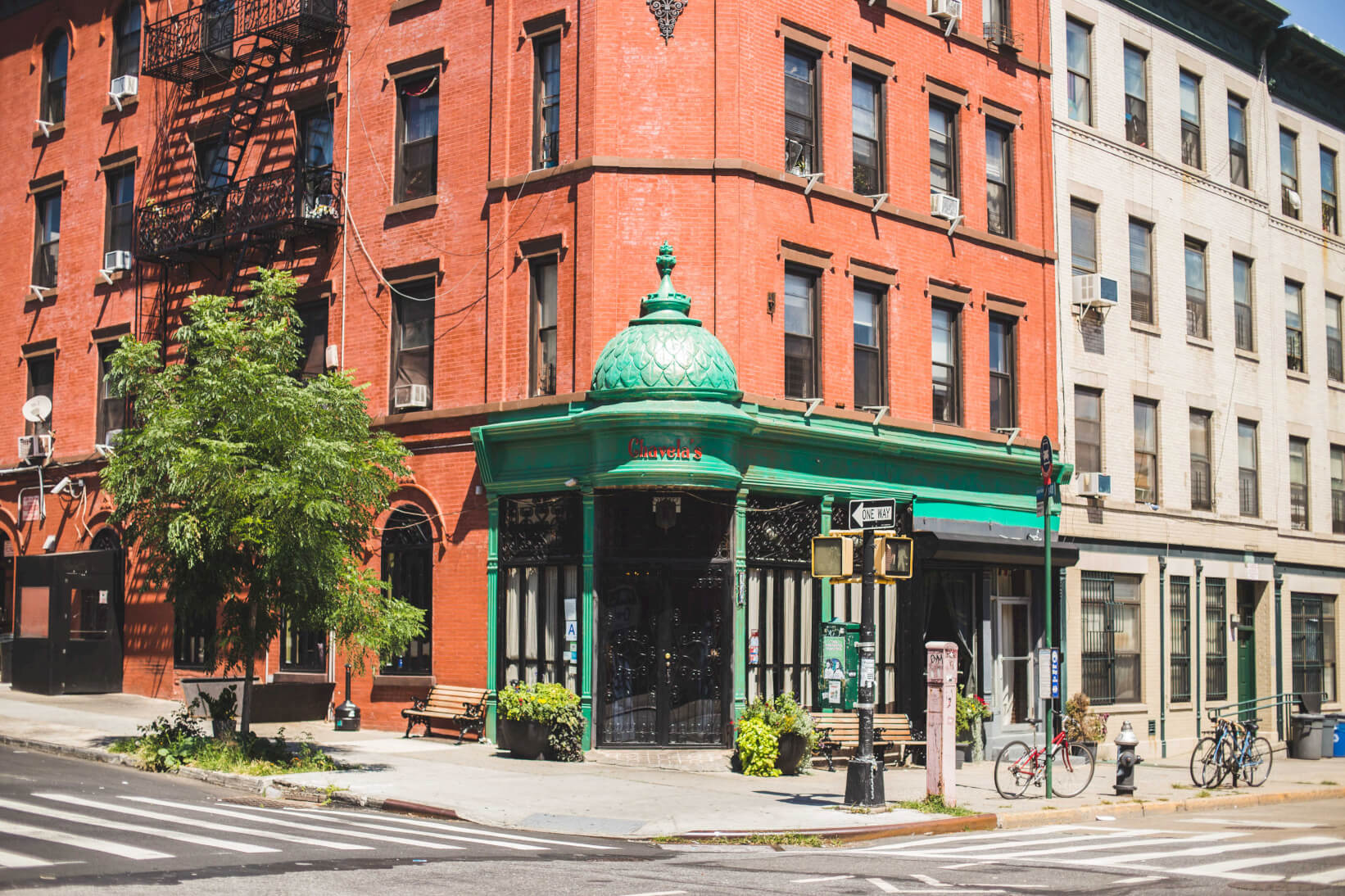We’ll be honest: moving to New York City can be overwhelming; there’s a lot to learn, explore, and discover, even after you get settled in. And if you ask anyone about their tips for moving to NYC, you’ll probably hear a ton of different advice, so we’ve narrowed it down to 8 crucial tips. Keep reading to discover what you need to know before you move to New York City.
Tip 1: Set your priorities
 First, take some time to assess your wants and needs. You should consider what time of year you’re looking to start a lease. Studies show that December and January are the best months to search for a new place in the city (lower rents!) if you’re hoping to save both money and time.
First, take some time to assess your wants and needs. You should consider what time of year you’re looking to start a lease. Studies show that December and January are the best months to search for a new place in the city (lower rents!) if you’re hoping to save both money and time.
Then, set a hard maximum rent price. Think about all your current expenses — from your Netflix subscription to your transportation card — in relation to your income, and make a decision on a monthly rent price you are unable to exceed. Typically, housing should take up about 30 percent of your monthly income (before taxes).
Lastly, make a list of priorities. Do you prefer convenience, like having a subway station nearby? Do you need in-unit laundry or lots of storage space? Do you want to live in a community-driven neighborhood? You can show that list to your broker or real estate agent, making it easier for them to narrow down the search.
Writing everything down and organizing against your budget will not only set you up better for your move but will help reduce stress when the time comes.
Tip 2: Scope out the real estate landscape
 No, this doesn’t mean you have to get familiar with the city’s top developers or understand the history of the SRO (although it is pretty interesting!). What this boils down to is realizing how apartment hunting works in New York, and what that means for your own search. Finding an apartment in NYC is super fast and competitive. Even if you’re moving from out of town, most apartments don’t start renting until a month before your move-in date. So, if you’re moving to NYC for the first time, it’s wise to either stay with a friend before your official move while you apartment search – or rent an apartment from a company that allows you to do the entire process online (e.g. Common – more on that shortly).
No, this doesn’t mean you have to get familiar with the city’s top developers or understand the history of the SRO (although it is pretty interesting!). What this boils down to is realizing how apartment hunting works in New York, and what that means for your own search. Finding an apartment in NYC is super fast and competitive. Even if you’re moving from out of town, most apartments don’t start renting until a month before your move-in date. So, if you’re moving to NYC for the first time, it’s wise to either stay with a friend before your official move while you apartment search – or rent an apartment from a company that allows you to do the entire process online (e.g. Common – more on that shortly).
For research, there are tons of resources and websites you can tap into. To start, you can browse apartment listings on Craigslist, Facebook groups, Naked Apartments, Apartments.com, StreetEasy, or Zumper to get the lay of the land. Find out what the average rent in the different boroughs are, if there are no-fee apartments available, and learn about rent-stabilized vs. rent-controlled buildings. It’ll also be helpful to reach out to multiple real estate agents and landlords, and not commit to a single person, so you can avoid any unwanted fees involved. On the other hand, if you work with Common, you can tour your apartment via a 3D Matterport, or even FaceTime!
Tip 3: Learn your transit options
 New York City’s public transit system (the Metro Transit Authority, aka MTA) has 27 subway lines that service 472 stations, and if you’re not careful, you could end up a little lost your first few days. Before moving, enter your address into Google maps or a similar program, and find the closest trains. Once you determine which subway stop is closest to you, start mapping the routes to your most traveled locations, like your office or even a restaurant you’re dying to try your first weekend. Pay attention to delays and scheduled work, too! For example, some trains have irregular weekend schedules, and some trains run express on weekdays. If you’re more confident about where you’re going when you finally arrive in the city, you’ll be able to better take in your surroundings and enjoy them, instead of stressing about where to go.
New York City’s public transit system (the Metro Transit Authority, aka MTA) has 27 subway lines that service 472 stations, and if you’re not careful, you could end up a little lost your first few days. Before moving, enter your address into Google maps or a similar program, and find the closest trains. Once you determine which subway stop is closest to you, start mapping the routes to your most traveled locations, like your office or even a restaurant you’re dying to try your first weekend. Pay attention to delays and scheduled work, too! For example, some trains have irregular weekend schedules, and some trains run express on weekdays. If you’re more confident about where you’re going when you finally arrive in the city, you’ll be able to better take in your surroundings and enjoy them, instead of stressing about where to go.
Tip 4: Explore the city by neighborhood

New York City is known for its cultural diversity, and each neighborhood and every borough has a distinct feel and flavor. The best way to get to know the whole city is to break it down piece by piece. Instead of spending a Saturday going to that museum uptown, and that dim sum spot downtown, and that new coffee shop in the West Village, pick a neighborhood and spend your day there. Trust us, there’s plenty to explore within a few square blocks, and you won’t waste time on the subway or bus. Plus, the next time you’re in the area, you’ll have plenty of spots in mind to visit again.
Tip 5: Talk to your neighbors

When you go to see an apartment or the neighborhood in person, make an effort to talk to the existing residents — and find out some details that online listings and real estate agents don’t mention. Ask your neighbors questions about the building, the noise, odors, bed bug history, nearby restaurants or attractions, what the super is like, and even what their rent is. Your neighbors, especially those who’ve been there for a while, will have firsthand and honest information to weigh in on your decision.
Tip 6: Prepare all your documents ahead of time.

As you’ve probably heard, apartments disappear from the market in a matter of hours. Get ahead of the game, and have all the necessary documents to apply with on hand. That includes a photo ID, a letter of employment on your company’s letterhead with your salary and start date, copies of recent pay stubs, bank statements from the previous 3 months, and the last year or two of tax returns. Even though the property management company will most likely run a credit check, it won’t hurt to check your own credit history beforehand.
Speaking of preparation, also have money ready. Most places will require a security deposit, in addition to a month’s rent up front, so make sure that amount is available for you to transfer right away.
Tip 7: Know what to shop for

A move inevitably involves trashing and buying a lot of new items. Maybe you’re on the hunt for a new sofa or mattress, but don’t forget all the little things you need when you move in. This includes everything from toilet paper to cooking oils to pots and pans of all sizes. It’s helpful to do an audit beforehand so you know what to shop for, as often times you don’t realize you forgot one of these items until you’re ready to cook or clean and it’s not there for you.
As an alternative, you can look for a living arrangement where these pieces come included, to help reduce your moving stress. In our coliving homes, we provide all of the furnishings, cookware, household essentials, and more so you don’t have to stress about a last-minute run for sponges or if your roommate left toilet paper for you. It’s actually all included in your rent.
Tip 8: Move into Common

Simplify your NYC apartment search by moving into Common’s beautiful coliving homes in the city. At Common, you won’t ever have to pay a broker fee, and your all-inclusive rent will cover a private bedroom, a furnished living space, utilities, in-unit laundry, household essentials, and amazing amenities. Your lease also comes with free event tickets to major happenings in New York, such as Broadway shows and wine tastings, as well as exclusive discounts at nationally loved brands including ClassPass and Talkspace. Common offers flexible leases, ranging from 3 months to a year, in which you have the option to transfer to our other homes across major US cities (San Francisco, Los Angeles, Chicago, and more). Head to our New York City landing page to explore our open homes and request a tour.


